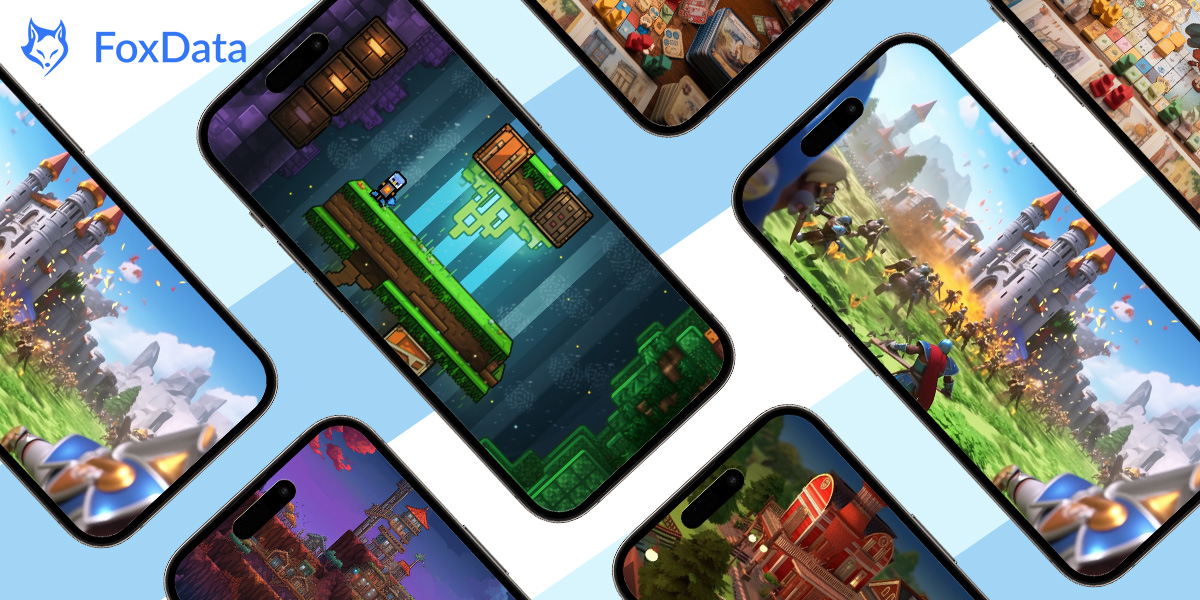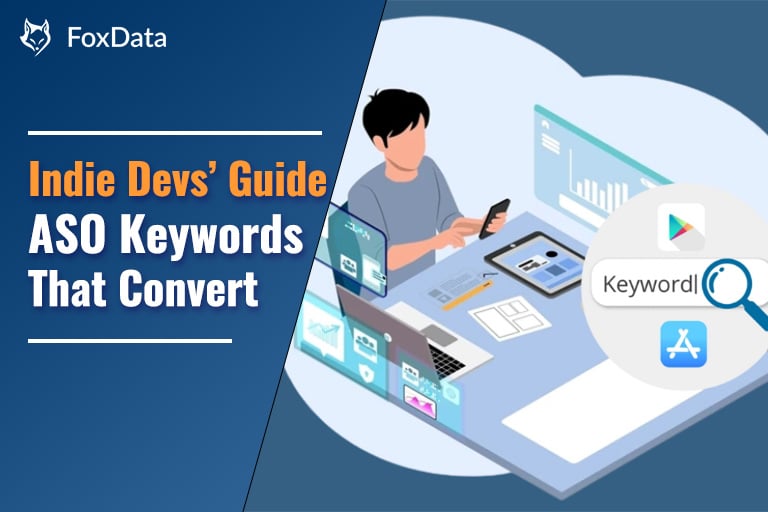The Rise of Midcore Games: Striking the Balance Between Acquisition Costs and User Engagement

A new study reveals that the cost of acquiring midcore gamers is nearly twice as high as that of casual gamers. However, the lifecycle value of midcore gamers is significantly higher, as reported in the 2023 Midcore Gaming Application Report.
What are Midcore Games?
In the mobile gaming industry, games are commonly categorized as "casual" or "hardcore" based on the level of player engagement. There is a fundamental distinction between players in terms of their investment and time spent on gaming. Individuals who dedicate substantial time to gaming, keep up with the latest trends (both in hardware and software), and have the time to complete lengthy game chapters are known as hardcore gamers. They enjoy competitive gameplay, challenging levels, and cutting-edge hardware devices.
On the other hand, there are casual players who engage in gaming sporadically, often playing games on their mobile devices during their daily commutes. Due to limited time and interruptions in gameplay, they tend to choose simple games that don't require intense focus and can be easily paused. Many casual players don't even consider themselves as "gamers".
"While casual games still dominate mobile, the challenges facing user acquisition, including Apple's IDFA changes and rising inflation, have caused an increasing number of developers to set their sights on the midcore market."
Midcore games aim to capture players from diverse cultures, age groups, and preferences. Their principle is to blend elements of casual and hardcore gaming to create a stage that appeals to a broader audience. This means shedding the limitations of game positioning and focusing on what truly attracts players, rather than deliberately lowering the difficulty or depth of the game. In essence, midcore games not only exhibit tolerance in game mechanics but also exhibit versatility in themes and objectives. That's why these games often incorporate symbolic or popular references instead of extreme expressions (such as graphic violence, hardcore content, or child-oriented themes).
An ideal midcore game is enjoyable, challenging enough to engage even hardcore players, yet easy to pick up, visually appealing, and doesn't demand much from casual players.
Why Are Install Costs Twice as High for Midcore Gamers?
Based on programmatic data from over 30 billion ad impressions, 550 million installs, and 1.1 billion clicks, the latest report finds that the average Cost Per Install (CPI) for midcore games is around $2, which is twice the cost of casual games ($1 CPI). In terms of cost-effectiveness, Android leads with a CPI of $0.73 per install, approximately one-fifth of iOS's $3.86 CPI per install.
Furthermore, compared to casual games, midcore games have a lower average Day 7 Return on Ad Spend (ROAS). The Day 7 ROAS for midcore games stands at 4.3%, while casual games achieve 7%. This difference can be attributed to the fact that midcore games require more time (beyond 7 days) for their enhanced monetization strategies to take effect.
Long-term retention is more crucial than short-term revenue for a midcore game. So to effectively attract target players, how can midcore games do?
How Midcore Games Attract Target Players?
The performance of midcore games typically depends on three main aspects: game accessibility, guiding user objectives, and player retention.
Game Accessibility
Firstly, it's essential to spark players' interest to attract a large initial player base. However, the game experience should gradually become more "midcore" over time, as casual players may gradually drift away while midcore players will remain engaged. Merely adding simple features or gameplay on top of an ordinary casual game will undoubtedly disappoint these players. As mentioned earlier, the key feature of midcore games is to make players familiar with all game processes in a short amount of time, enabling even inexperienced players to easily get started.
When Call of Duty games are released, they often attract a massive player base due to their compelling themes, immersive storytelling, and intense multiplayer experiences. The initial stages of the game are designed to be accessible, allowing players of all skill levels to jump in and start playing without feeling overwhelmed.
However, as players continue to engage with the game, they are introduced to more advanced mechanics, strategic elements, and deeper gameplay systems. This gradual increase in complexity caters to the midcore audience, providing them with a rewarding and challenging experience. The game strikes a balance between attracting casual players and retaining midcore players who seek more depth and skill-based gameplay.
Guiding User Objectives
Regarding guiding user objectives, if some players prefer not to compete and just want to play at their own pace, it's crucial to avoid pushing them into competitions that might lead to frustration if they end up facing opponents of higher levels. This can negatively impact the game's retention rate. For players who dislike intense competition, you can provide abundant daily tasks and reward them appropriately after completing these tasks, giving players enough reasons to stay.
The game "Genshin Impact" combines action-based combat with elemental abilities, creating a dynamic and strategic gameplay experience. Players can switch between different characters, each with unique skills and playstyles, fostering variety and depth in combat encounters. The gameplay mechanics strike a balance between accessibility and complexity, appealing to both casual and more dedicated gamers.
Player Retention
The key to the success of midcore games lies in finding ways to retain players and gradually acclimate them to the game's mechanics and pace. Even if they take short breaks from playing, they won't remove the game from their playlist. This requires providing players with a sense of accomplishment for their progress, ensuring there's a continuous incentive for players to return to the game, even after completing all the main storylines, by offering enjoyable experiences and new challenges.

Where Are the Best Deals?
EMEA is the most favorable region for midcore game user acquisition, with a high day 7 ROAS of 4.4% and lower costs at 0.80 per install. North America is the most expensive region, with a CPI of 5.45, but still has a similar day 7 ROAS to EMEA. Latin America has the lowest install costs at $0.27, making it the most cost-effective region, but with a relatively lower day 7 ROAS of 1.5%, indicating that monetization of midcore games takes longer to generate returns compared to EMEA and North America.
When examining different sub-genres, shooter games exhibit the highest Cost Per Install (CPI) at $7.47. However, they also generate the highest average Return on Ad Spend (ROAS) at 6% by day 7. This indicates that although acquiring shooter game players may be more expensive, they tend to provide better returns within the initial seven days.
In contrast, strategy game players are more cost-effective to acquire compared to shooter players, with an average CPI of $2.77 per install. Strategy games offer a balanced option in terms of acquisition costs.
RPG games stand out as the most cost-effective choice among the three genres, with a significantly lower CPI of $0.60 per install. However, RPG games also demonstrate a notably lower day 7 ROAS, averaging around 1.7%. This suggests that while the acquisition costs for RPG players are relatively low, it takes longer for their monetization efforts to generate substantial returns within the first seven days.
Now you may have noticed that excellent game design schemes always integrate the advantages mentioned above, and this endeavor is gradually gaining recognition among the masses. Perhaps this is a signal for developers to attract more players, or perhaps it is a trend for midcore games to move towards the mainstream.
We believe that only by adhering to all the rules outlined above can a truly widely spread game be created, a game that suits everyone (just like movies and television today). So far, midcore games have been rare due to the difficulty of attracting players, publisher obstruction, and the inherent challenges in developing such games, paying the price of being pioneers. Hopefully, in the near future, there will be some visionary developers and publishers brave enough to explore this blue ocean.
Welcome to read more App Marketing News & Trends on Game!
Now just join FoxData and embark on a business growth journey as we unveil a FREE App Data Analytics Tool, which boosts your downloads, increases your user base, and watches your performance soar to new heights!






